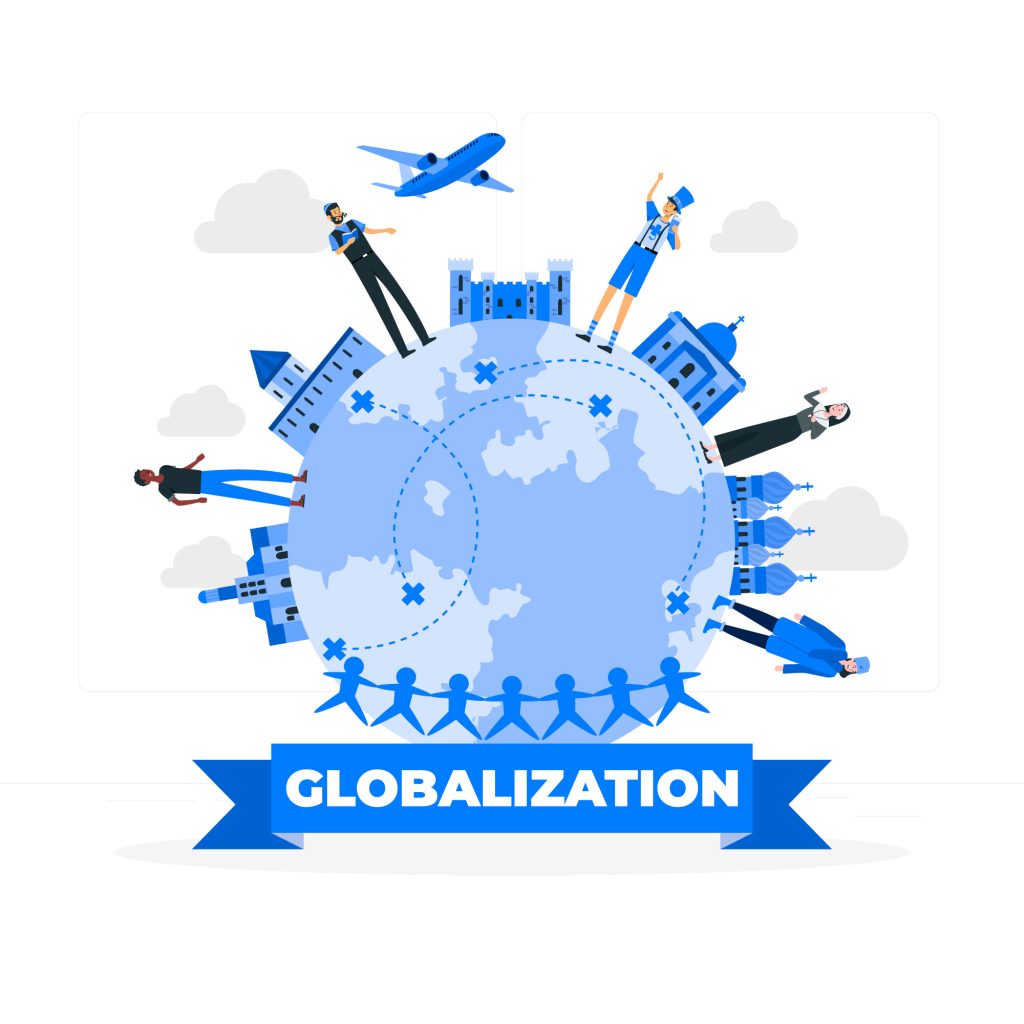

Globalization refers to the process by which businesses, cultures, and societies become integrated through a global network of trade, communication, and transportation. Unlike other global trading frameworks such as regional trade agreements (RTAs) or bilateral trade agreements (BTAs), globalization encompasses a broader scope. It involves not just economic interactions but also cultural exchanges, technological transfers, and the movement of people across borders. While RTAs and BTAs focus on reducing trade barriers between specific countries or regions, globalization aims to create a more interconnected and interdependent world.
Before embracing globalization, many developing countries had economies characterized by:
The majority of these economies relied heavily on agriculture and had minimal industrial activities. Manufacturing sectors were underdeveloped, and industrial output was relatively low.
Many developing nations operated with protectionist policies, imposing high tariffs and import restrictions to protect nascent industries from international competition.
Due to restrictive economic policies and unstable political climates, foreign direct investment (FDI) was minimal. Investors were wary of entering markets with high risks and uncertain returns.
Limited access to advanced technologies hindered productivity and innovation. Most developing countries were slow to adopt new technologies, resulting in lower efficiency and competitiveness.
Due to trade barriers and lack of infrastructure, many developing countries had restricted access to global markets, limiting their export potential and economic growth.
The implementation of globalization policies has brought significant changes to the economies of developing countries. Here are some key effects:
Globalization has spurred economic growth in many developing countries. By opening up their markets and adopting more liberal trade policies, these nations have attracted foreign investment and advanced technologies, leading to industrialization and economic diversification.
– Example: China’s embrace of globalization in the late 20th century transformed it from an agrarian economy to a global manufacturing powerhouse. Between 1978 and 2020, China’s GDP grew from $149.5 billion to $14.7 trillion, making it the world’s second-largest economy.
The removal of trade barriers and the creation of more stable investment climates have attracted substantial FDI, which has fueled infrastructure development, created jobs, and stimulated economic activities.
– Example: India liberalized its economy in the 1990s, leading to a significant increase in FDI. In 2020, India received FDI inflows of $64 billion, making it one of the top FDI destinations globally.
Globalization has facilitated the transfer of technology and knowledge from developed to developing countries. Access to advanced technologies has enhanced productivity, efficiency, and innovation in various sectors.
– Example: The adoption of mobile technology in Africa has revolutionized communication and financial services. Mobile banking services like M-Pesa in Kenya have increased financial inclusion and economic participation.
Globalization has provided developing countries with access to larger markets, boosting exports and driving economic growth. By integrating into global value chains, these countries can participate in international trade more effectively.
– Example: Vietnam’s integration into the global economy has significantly boosted its exports. In 2020, Vietnam’s exports reached $281 billion, up from just $14.5 billion in 2000.
Economic growth driven by globalization has contributed to poverty reduction and improved living standards. Higher incomes, better job opportunities, and increased access to goods and services have uplifted millions of people.
– Example: According to the World Bank, the number of people living in extreme poverty worldwide fell by more than 1 billion between 1990 and 2015, largely due to economic growth in developing countries spurred by globalization.
Despite the positive impacts, globalization has also faced criticisms and challenges:
Globalization can lead to income inequality within countries, as benefits are not always evenly distributed. Skilled workers and urban areas often gain more, leaving rural and unskilled populations behind.
Rapid industrialization and increased production can lead to environmental degradation. Developing countries may face significant environmental challenges as they prioritize economic growth.
The spread of global culture can erode local traditions and identities, leading to cultural homogenization.
Dependence on global markets can make developing economies vulnerable to external shocks, such as global financial crises or fluctuations in commodity prices.
Globalization has undeniably transformed the economies of developing countries, bringing substantial economic growth, industrialization, and improved living standards. However, it also presents challenges that need to be addressed to ensure sustainable and inclusive growth. As developing countries continue to integrate into the global economy, it is crucial to implement policies that mitigate the negative effects of globalization while maximizing its benefits. By doing so, these nations can achieve long-term prosperity and development in an increasingly interconnected world.



